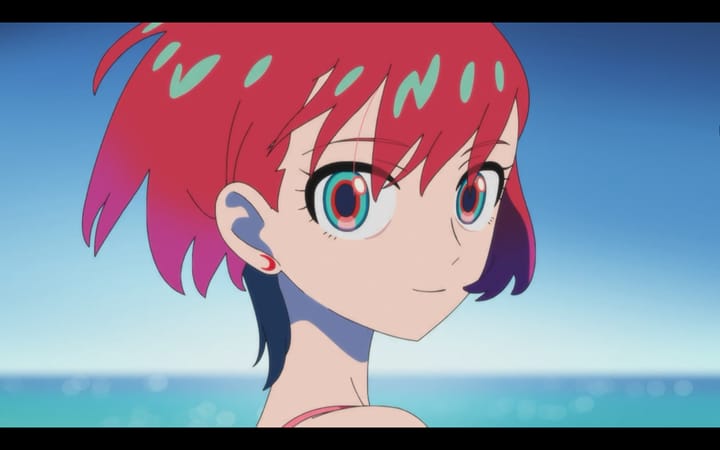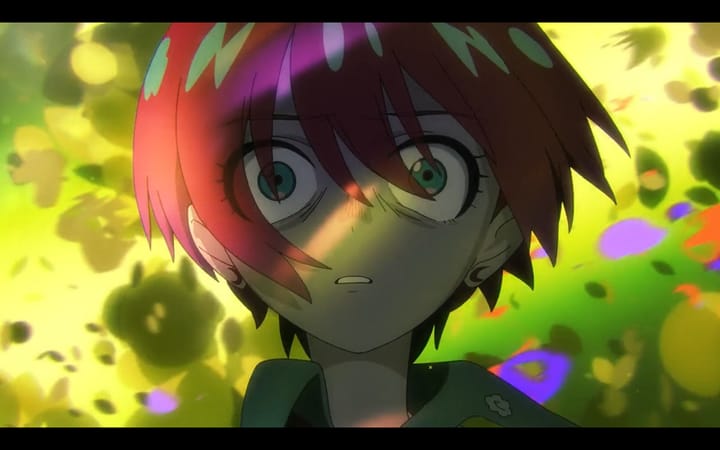Flowers for Scott Pilgrim Takes Off
Scott Pilgrim Takes Off isn’t just a good show, or a good “Scott Pilgrim” thing. It’s a real, idiosyncratic anime production.
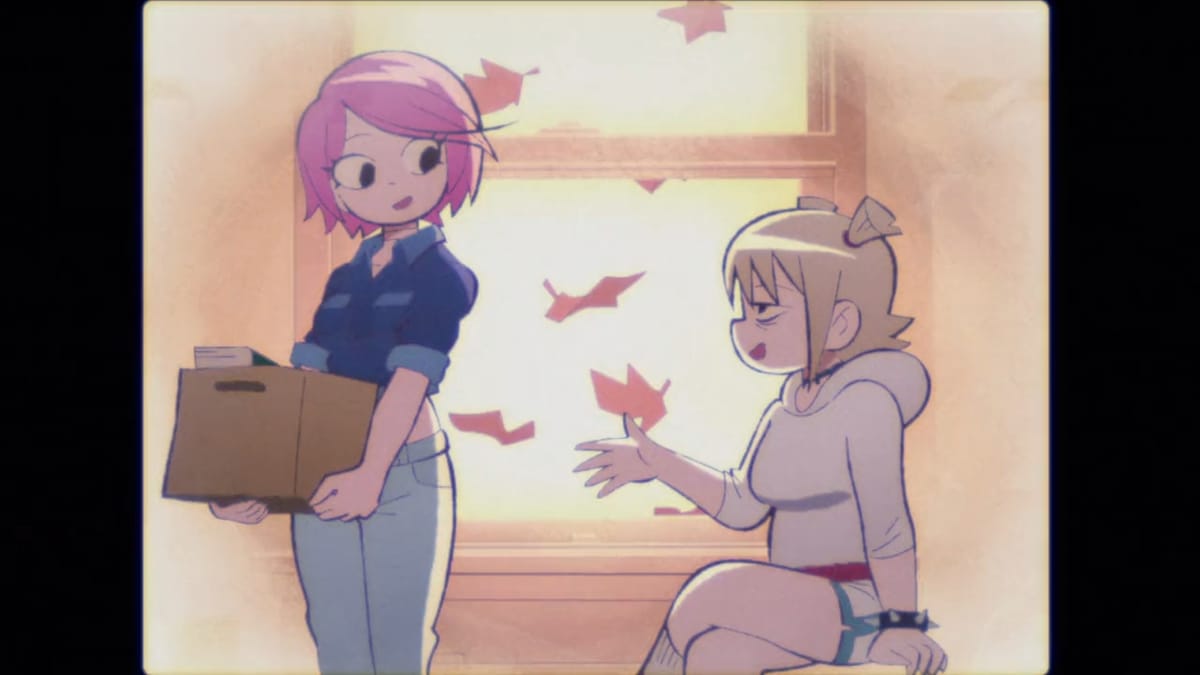
Welcome to ANIWIRE! This week we’re talking about Scott Pilgrim Takes Off, the new Netflix series headed by original creator Brian Lee O’Malley. Before that, though, here’s some news from the past few weeks.
News
- A new trailer was released for Ultraman Rising, a film co-directed by Shannon Tindle and John Aoshima. Ultraman’s had a high success rate for animated projects, so I have high hopes for this one.
- Mari Okada’s new romantic melodrama, maboroshi, is coming to Netflix on January 15th.
- P.A. Works and DMM.com announced Nanare Hananare, a new series featuring folks that worked on the BanG Dream! franchise. Very excited to see what this team does next after BanG Dream It’s MyGo!!!!! blew the roof off this year.
- A Luffy balloon made its first appearance at this year’s Macy’s Thanksgiving Parade. In the process it encountered its greatest enemy yet: New York City trees.
- Drawn and Quarterly is publishing one of the best manga ever, Sanpei Shirato’s 1964 classic Kamui-den.
- Several ex-Kotaku journalists, including Gita Jackson (of Motherboard) and Riley MacLeod (of Launcher), launched a new worker-owned games journalism site called Aftermath.
- The excellent Turn A Gundam is streaming on YouTube for the next week or so. Check it out! (The 5 Reconguista in G movies are up there as well if you’re curious.)
- You can now read a 2000s draft of the BIONICLE story bible. Enjoy.
Bookmarks
- For Full Frontal, Matteo Watzsky interviewed animator Terumii Nishi and voice actor Ayano Fukumiya. Many outrageous quotes in here, such as “the company that received the most money from the Cool Japan Fund is a ramen chain.”
- For Anime News Network, Coop Bicknell spoke to Studio Trigger president Masahiko Otsuka. Lots of funny details here.
- Kevin Cirugeda wrote about Hayao Miyazaki’s latest film The Boy and the Heron, this time about how it represents a change in Miyazaki’s output as an animator. Whether or not The Boy and the Heron is the best animated film of the year, it’s certainly led to plenty of great thoughtful writing.
- For Anime News Network, Steve Jones and Chris Farris wrote about various anime adaptations of the famed visual novel studio Key.
- Also at Anime Herald, Samantha Ferreira covered the recent Cowboy Bebop 25th Anniversary Concert in New York City.
- I recommend jumping on board 52 Pickup, a new podcast where Gita Jackson and Alex Jaffe discuss the wildly ambitious 2000s superhero comic series 52.
AMV of the Week
Here’s “Fiery Red” by TONE.

I didn’t know what to expect from Scott Pilgrim Takes Off, the Netflix reboot of Bryan Lee O’Malley’s 2004 comic series. Certainly, I liked the comic back when I read it in high school. I also like Science Saru, the anime studio producing the new series. But Scott Pilgrim is a product of a very specific time period, when the idea of a 20-something Canadian guy punching his girlfriend’s evil ex-boyfriend in the face and turning him into a pile of coins (just like a video game!) was cool and not embarrassing.
Bryan Lee O’Malley hadn’t released an original work since Snotgirl, his collaboration with Leslie Hung in 2017. I hoped that his next project would stretch his capabilities even further. Scott Pilgrim Takes Off was exactly what I didn’t want: a way for O’Malley to coast on the success of his breakthrough hit. Even worse, it threatened to hitch Science Saru (a studio founded by risk-taking artists Masaaki Yuasa and Eunyoung Choi) to Netflix’s intellectual property adaptation mill.

Scott Pilgrim Takes Off surprised me, though. Not because it was a good show, since that was always a possibility. Not because it diverged from the source material, since O’Malley and his collaborator BenDavid Grabinski suggested in interviews they would do just that. Scott Pilgrim Takes Off surprised me because it had flower language. The third episode of the series, “Ramona Flowers Rents a Video,” is bookended by white anemones, meaning “sincerity” in Japanese flower language or hanakotoba.
Flower language has been a running motif in anime for decades. You can find it in popular action anime, romantic melodramas and even giant robot shows. (For more information, I recommend reading the works of esports journalist and anime blogger Emily Rand.) The undisputed master of flower language in anime today is Naoko Yamada, whose television and film productions are festooned with symbolic flora. Her most experimental work, the film Liz and the Blue Bird, layers flowers, music and claustrophobic set design to convey the cast’s unspoken feelings. More recently, her Science Saru production The Heike Story began with sal tree flowers as a reminder of “the impermanence of all things.”

Yamada spent much of her career at Kyoto Animation, a studio responsible for vibrant works like Sound! Euphonium and Violet Evergarden. The Heike Story was her first full-length series produced outside the studio. It could not match the polish and consistency of KyoAni’s output. But it did represent a unique opportunity for Yamada’s followers to collaborate with their idol outside of KyoAni’s walled garden. One such follower was China, who boarded and directed the show’s fantastic third episode. For another example of his style, I recommend his music video “Sore wo Ai to Yobudake.”
Another follower is moko-chan, an animator and storyboarder at Science Saru. moko-chan storyboarded the fifth episode of The Heike Story and assisted on the finale. Their credits are otherwise scarce, save for appearances in Masaaki Yuasa’s final Science Saru film Inu-Oh as well as the ONA Tatami Time Machine Blues. Scott Pilgrim Takes Off, though, represents moko-chan's biggest project to date. Partly because they directed the show’s opening sequence, which is crucial for setting the right tone. But also because they were in charge of the show’s third and best episode.

“Ramona Flowers Rents a Video” is a pivotal episode of Scott Pilgrim Takes Off. First because it establishes the formula that future episodes will follow. Ramona Flowers encounters an ex, helps resolve their problems and finds closure. Second, the episode pointedly breaks from the source material. Scott Pilgrim fans might expect Lucas Lee to be the next ex in line after Matthew Patel, but Ramona duels her fourth ex Roxy instead. Third, “Ramona Flowers Rents a Video” gives Roxy a second chance. She’s just as chaotic and impulsive as she was in the source material, but this time her rage is fuelled by hurt, not just spite.
In the episode’s climax, Ramona and Roxy are sucked into a shelf of DVDs and fight across multiple film styles and genres. It’s an impressive sequence with no parallel in the original comic. It’s also surprisingly serious. Scott Pilgrim usually wins fights via anticlimax: tricking somebody into a skateboard accident, or calling the vegan police on a psychic. But Ramona and Roxy hold their own. They fight until they are exhausted, and then they keep fighting. By the end, they’re sobbing, overcome by their past wounds. Reality itself collapses.
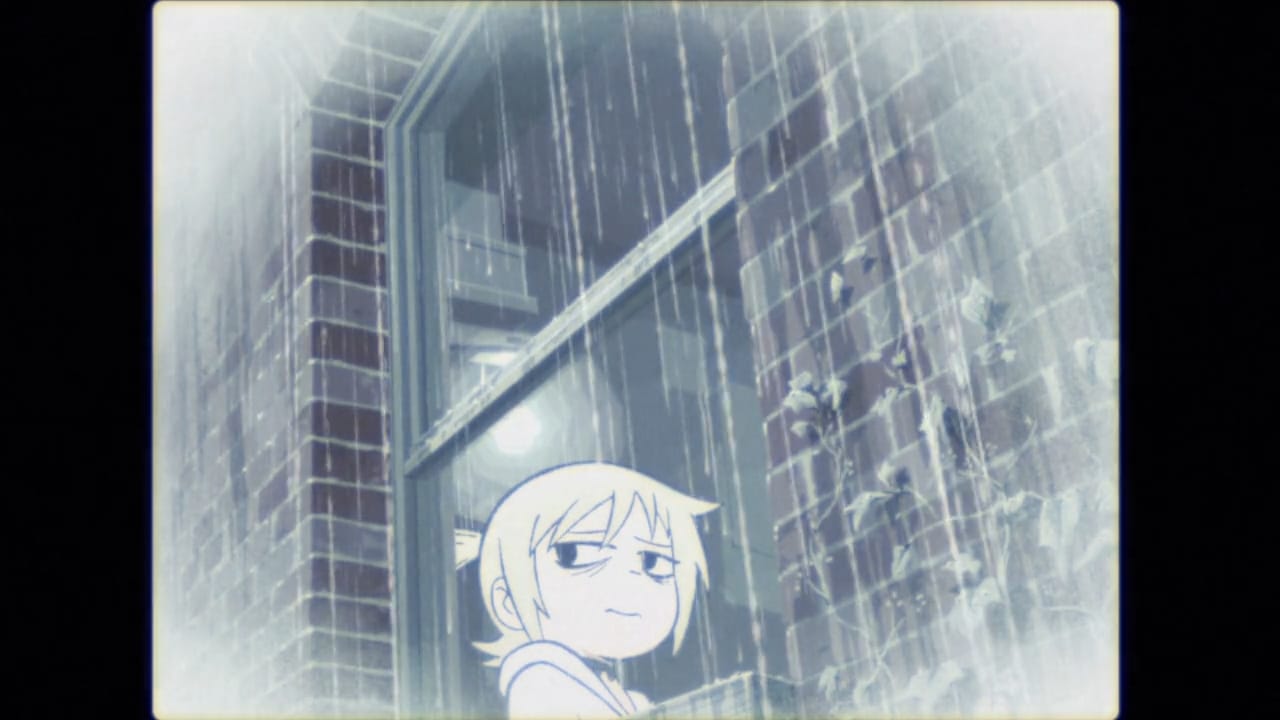
The original Scott Pilgrim comic and film played Ramona’s bisexuality as a joke. By 2023, though, gay people are no longer a punchline. Roxy is allowed to be both a young woman scarred by the time her college girlfriend ghosted her, as well as a chaotic gremlin that hums the Hamster Dance song while wielding a katana. Similarly, Ramona can be somebody who likes both girls and boys without it being a big deal. Neither of these characterizations contradict anything from the source material. They expand on the source while keeping the appeal of the comic intact.
O’Malley and Grabinski deserve some credit for their script, which provides the impetus for Ramona and Roxy’s reunion. But many of the episode’s most memorable moments have nothing to do with the script, and everything to do with the way Science Saru interprets it. Viscous smoke emanating from a coffee cup. The way that light falls in Julie’s coffee house. Knives and Kim Pine’s jam session, which breaks down the world into stars and waves. These are all choices made by the storyboarder moko-chan, series director Abel Góngora and the rest of their talented crew. Self-expression, not just work-for-hire.
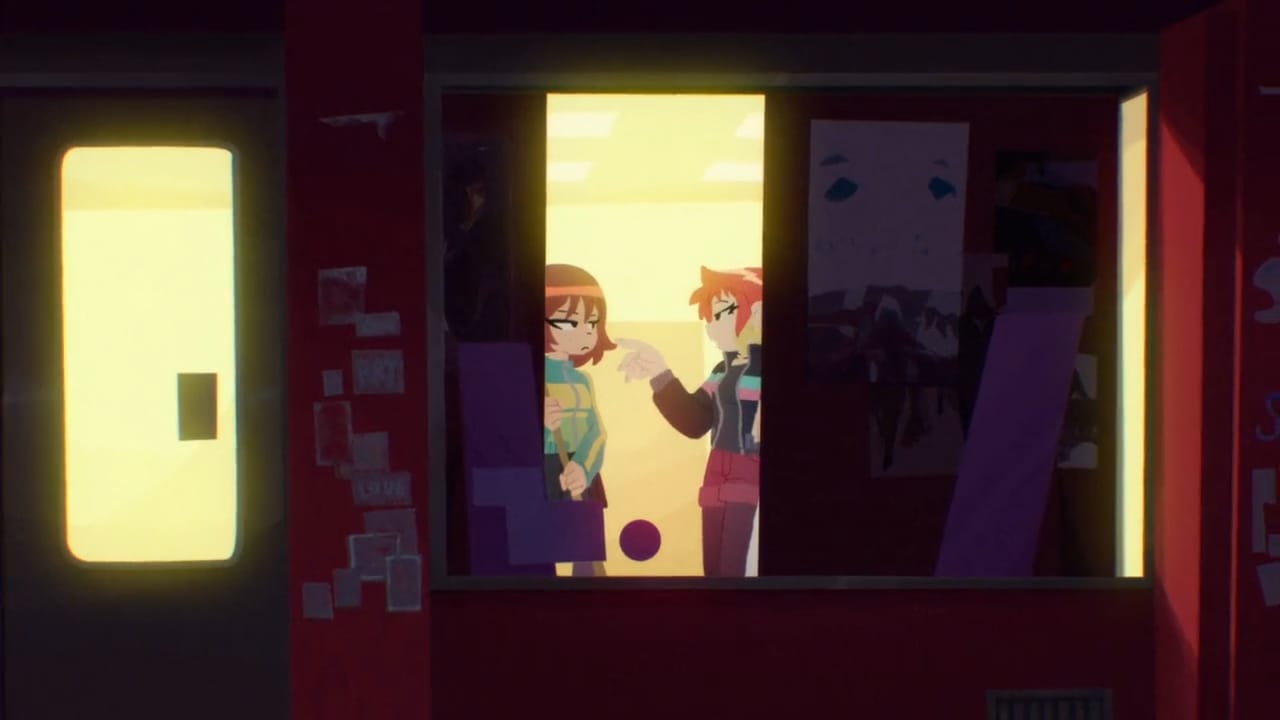
The use of flower language especially stands out to me in this respect. The Scott Pilgrim comics and film raided anime and manga for parts, but left flower language alone. Its appearance in “Ramona Flowers Rents a Video” reflects the preferences of artists outside of O’Malley’s circle. Their work expands and “modernizes” the world of Scott Pilgrim just as effectively as O’Malley and Grabinski’s contributions.
Scott Pilgrim Takes Off isn’t just a good show, or a good “Scott Pilgrim” thing. It’s a real, idiosyncratic anime production. I never would have expected it, but I’m grateful for it.
